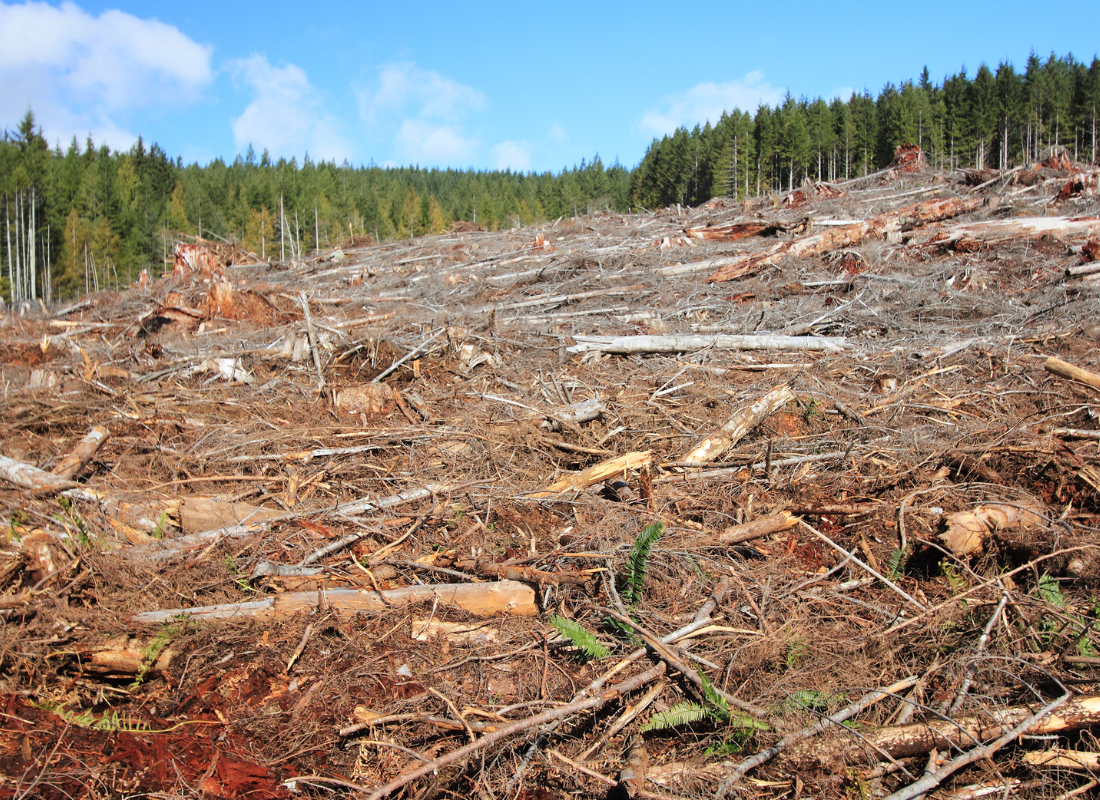
Deforestation, the widespread removal of forests for various purposes, is a global environmental issue with profound consequences for ecosystems and human societies alike.
Across the world, forests are being cleared at an alarming rate, driven by a combination of factors that range from agricultural expansion to urbanization.
In this article, we will explore the primary causes of deforestation and its far-reaching effects on both the environment and human well-being.
Causes of Deforestation:
Agricultural Expansion
 One of the primary drivers of deforestation is the expansion of agricultural land.
One of the primary drivers of deforestation is the expansion of agricultural land.
As the global population grows and demands for food and resources increase, forests are cleared to make way for large-scale agricultural operations.
Monoculture crops such as soybeans, palm oil, and cattle ranching are major contributors to deforestation, particularly in regions like the Amazon rainforest and Southeast Asia.
The pursuit of economic gain often leads to unsustainable land management practices, exacerbating the loss of forest cover.
Logging and Timber Extraction
 Commercial logging for timber and wood products is another significant cause of deforestation.
Commercial logging for timber and wood products is another significant cause of deforestation.
The demand for timber fuels a lucrative industry that often prioritizes short-term profits over long-term sustainability. Irresponsible logging practices, including clear-cutting and selective logging, result in the destruction of vast areas of forest.
Illegal logging compounds the problem, contributing to habitat destruction, biodiversity loss, and soil degradation.
Infrastructure Development
 The construction of roads, highways, dams, and other infrastructure projects requires the clearance of forests.
The construction of roads, highways, dams, and other infrastructure projects requires the clearance of forests.
These projects, aimed at promoting economic development and urbanization, fragment habitats and disrupt wildlife corridors.
Additionally, infrastructure development provides access to previously inaccessible areas, leading to further deforestation for resource extraction and agricultural expansion. Balancing the need for infrastructure with conservation efforts is essential for minimizing the impact on forest ecosystems.
Mining and Extractive Industries
 Mining activities, including mineral extraction, oil drilling, and coal mining, often result in extensive forest clearance.
Mining activities, including mineral extraction, oil drilling, and coal mining, often result in extensive forest clearance.
The pursuit of valuable resources drives the destruction of forest ecosystems, particularly in environmentally sensitive areas. Mining operations contribute to habitat destruction, soil erosion, water pollution, and loss of biodiversity.
Effective regulation and enforcement of environmental laws are crucial for mitigating the impacts of mining on forests.
Urbanization and Population Growth
 Rapid urbanization and population growth lead to the expansion of cities and towns, resulting in the conversion of forests into urban and suburban areas.
Rapid urbanization and population growth lead to the expansion of cities and towns, resulting in the conversion of forests into urban and suburban areas.
As urban areas expand, they encroach upon forested lands, leading to habitat loss and fragmentation.
Moreover, population growth increases the demand for natural resources, driving deforestation for timber, fuelwood, and land development. Sustainable urban planning and land-use policies are essential for managing urban expansion while preserving forest ecosystems.
Effects on Biodiversity :
Fauna and Flora
 Deforestation poses a significant threat to biodiversity, resulting in the loss of countless plant and animal species.
Deforestation poses a significant threat to biodiversity, resulting in the loss of countless plant and animal species.
Forests are home to an estimated 80% of the world’s terrestrial biodiversity, providing habitats for diverse ecosystems and wildlife.
As forests are cleared, species lose their homes and food sources, leading to declines in population numbers and, in some cases, extinction.
The loss of biodiversity not only diminishes the beauty and richness of our natural world but also disrupts essential ecosystem functions, such as pollination, seed dispersal, and nutrient cycling.
Impact on Climate Change
 Deforestation is a major contributor to climate change, both through the release of carbon dioxide stored in trees and the disruption of ecosystems’ ability to sequester carbon.
Deforestation is a major contributor to climate change, both through the release of carbon dioxide stored in trees and the disruption of ecosystems’ ability to sequester carbon.
Forests act as carbon sinks, absorbing and storing carbon dioxide from the atmosphere. When trees are cut down or burned, this stored carbon is released into the atmosphere, contributing to the greenhouse effect and global warming.
Moreover, deforestation reduces the capacity of forests to absorb carbon dioxide, exacerbating the effects of climate change and leading to more frequent and severe weather events.
Socioeconomic Consequences
 The consequences of deforestation extend beyond environmental degradation, affecting the livelihoods and well-being of millions of people around the world.
The consequences of deforestation extend beyond environmental degradation, affecting the livelihoods and well-being of millions of people around the world.
Indigenous communities and rural populations who depend on forests for their livelihoods are disproportionately affected by deforestation, as their traditional lands and resources are lost or degraded.
Moreover, deforestation can lead to increased poverty, food insecurity, and social conflict, as competition for land and resources escalates.
Conservation Efforts and Solutions
 Despite the alarming rate of deforestation, there is hope for conservation and sustainable management of forests.
Despite the alarming rate of deforestation, there is hope for conservation and sustainable management of forests.
Efforts to combat deforestation include the establishment of protected areas, the implementation of sustainable land management practices, and the promotion of reforestation and afforestation initiatives.
Furthermore, international cooperation and policy interventions are essential for addressing the root causes of deforestation, such as unsustainable agricultural practices and illegal logging.
By working together to protect and preserve our forests, we can mitigate the impacts of deforestation and secure a more sustainable future for generations to come.




